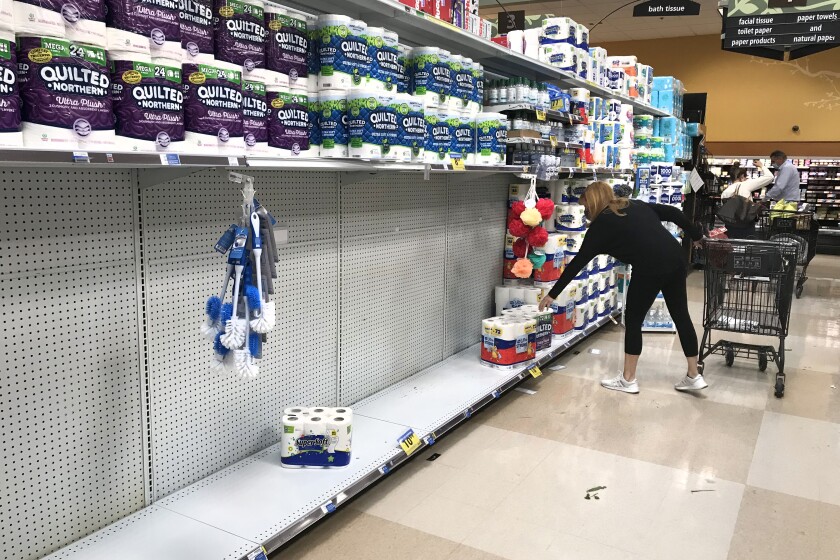
California officials have walked back a stringent capacity limit for grocery stores at the 11th hour to ensure that residents will have enough access to food amid a sweeping new stay-at-home order.
On Sunday, hours before new a health order went into effect across much of California, officials issued an addendum allowing grocery stores to operate at 35% capacity — down from 50% capacity, which has been in effect statewide since the beginning of the pandemic, but up from 20% in the latest state-ordered restrictions. The state’s order had required both essential stores, such as grocers, and nonessential retail, such as shopping malls, to limit capacity to 20% if they were in an area considered a coronavirus danger zone. But the California Grocers Assn. lobbied against such a drastic reduction.
“In order to ensure that California’s grocery stores are able to safely deliver sufficient quantities of food to California households, it is necessary to ensure capacity for grocery stores,” according to the supplemental order signed by Dr. Erica Pan, the California Health Department’s acting public health officer, on Sunday.
Grocery stores must be standalone operations and primarily sell food to qualify for the increased capacity, the supplemental order states, noting that access must be “strictly metered” to ensure compliance.
On Friday evening, the association said in a statement it did not think Newsom’s order applied to grocery stores. Now, the association is advising members to abide by the cap of 35%.
Ron Fong, president and CEO of the association, argued that grocery stores needed to be distinguished from other types of retail, noting that under the original order all stores were lumped together.
Contrary to other retailers, such as clothing stores, “we are providing critical infrastructure, providing safe food to our customers,” Fong said Monday morning.
